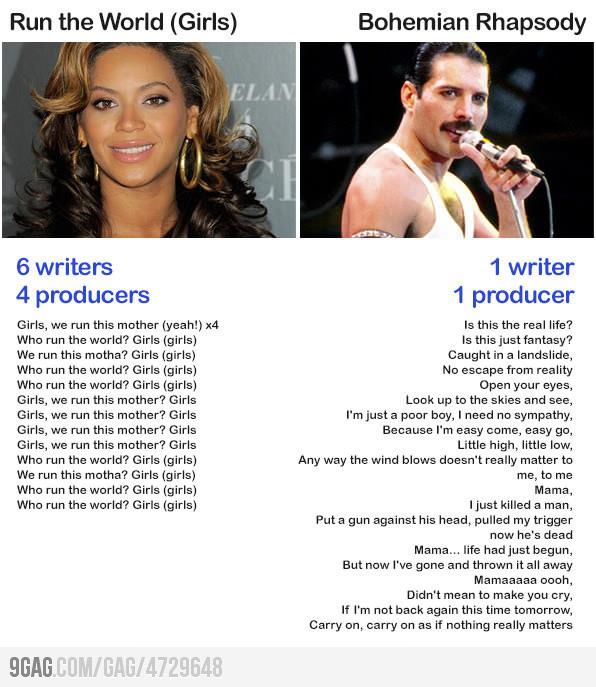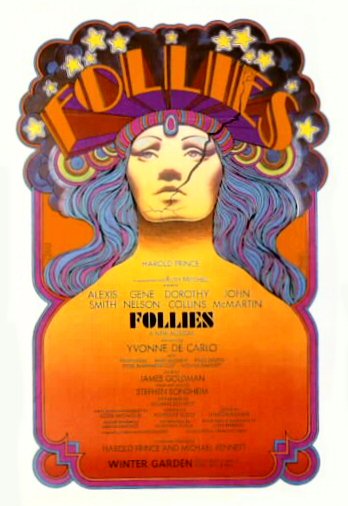Anatomy of a Song: "Losing My Mind"
“Music is miraculous in that one can say everything in such a way that those in the know can understand it all, and yet one’s own secrets, those which one will not even admit to oneself, remain undivulged.” – Arnold Schoenberg
(Video no longer available)
It was by chance that I had the TV on late Monday night and caught the television debut of hip-hop artist Frank Ocean. Only half-paying attention, I heard Jimmy Fallon introduce his musical guest. I didn’t have time to process the name before the opening organ chords and the plaintive voice of a scrawny 24 year old drew my rapt attention for the next four minutes. On screen was a man expressing his love for another man – the same man who made news last week for the very same thing.
The blogosphere exploded last week when Frank Ocean posted a note on his Tumblr telling a story, from when he was 19 years old, about the love he felt for close friend. This was big news in the stereotypical masculine and somewhat misogynist hip-hop culture (a culture that Frank Ocean has contributed to in the past). And now, we were given the opportunity to hear the words direct from Ocean himself, singing “Bad Religion” in what was apparently a last-minute move by Fallon’s producers.
 Image via Wikimedia CommonsBut is that what the performance of “Bad Religion” was about? Most of what I’ve read says that it was. I’m not so sure. Granted, the signs are hard to miss, from Ocean “coming out” last week (he never actually said that he’s gay) to the masculine pronouns. But “Bad Religion” is more than a gay love story. It’s about unrequited love, a near-universal emotion found in stories from Greek mythology to Nicholas Sparks movies.
Image via Wikimedia CommonsBut is that what the performance of “Bad Religion” was about? Most of what I’ve read says that it was. I’m not so sure. Granted, the signs are hard to miss, from Ocean “coming out” last week (he never actually said that he’s gay) to the masculine pronouns. But “Bad Religion” is more than a gay love story. It’s about unrequited love, a near-universal emotion found in stories from Greek mythology to Nicholas Sparks movies.
Maybe we should be ecstatic that we heard a young guy declare, “I could never make him love me.” It’s a sentence that, as a gay man, I can relate to, as I’m sure countless other gay men and straight women can. But unreciprocated love isn’t just an emotion felt by gays or women; the pronouns in this song don’t matter. The universality of the message, the passion of the his singing – the melding of a blues and gospel confessional with contemporary hip-hop – that’s what made Ocean’s performance so noteworthy.
I know there are people who will disagree with me. Hell, there’s even a part of me that wants to exclaim, “Yes! A gay hip-hop artist singing about it on television!” and be done with it, QED. It’s a big moment for our nation and culture. But if we can look past the heteronormativeness in nearly every other love song ever written, we can look past the homosexual subtext of “Bad Religion.” We need to. Our society is no longer one where should have strict divides between sexuality, race, or any other cultural markers.
I can’t predict the future or fight cynicism. Maybe Ocean “came out” last week to generate buzz for his album; it’s likely the album won’t remain on top of the iTunes charts for much longer. But I think that on Monday night we saw the debut of an artist breaking away from his band and from behind the scenes of other artists, and reaching out by telling a story full of raw emotion. Doing so he pulled us into his world, and sometimes that’s exactly what we need music performances to do. Am I naïve enough to think that this performance alone will change our perceptions of homosexuality? No. But it was still a great moment to witness.
 Hop over to my Tumblr page to see a brief rant about this and similar pictures that everyone shares on Facebook.
Hop over to my Tumblr page to see a brief rant about this and similar pictures that everyone shares on Facebook.
Comments and discussion - as always - are more than welcome.
 Image via Wikimedia CommonsThis summer I took a course on Stephen Sondheim. We focused on five shows: Company, Follies, A Little Night Music, Sweeney Todd and Into the Woods. One of the requirements was to write journal reflections about something we talked about in class, or expanding on something. Below is one I wrote - in the form I turned in - talking about similarities between Follies and A Chorus Line. It's not hard research, so there may be a few minor errors (and, truthfully, I ripped most of this out on a late night 2-hour car ride to Chicago, with some additions and edits made later). I also tried to keep it brief; the reflections weren't supposed to be more than 500 words, but this ended up being 700+. I think there's more in here that can be studied and discussed, and if the opportunity presents itself this semester, I hope to have time to expand upon some of the ideas below.
Image via Wikimedia CommonsThis summer I took a course on Stephen Sondheim. We focused on five shows: Company, Follies, A Little Night Music, Sweeney Todd and Into the Woods. One of the requirements was to write journal reflections about something we talked about in class, or expanding on something. Below is one I wrote - in the form I turned in - talking about similarities between Follies and A Chorus Line. It's not hard research, so there may be a few minor errors (and, truthfully, I ripped most of this out on a late night 2-hour car ride to Chicago, with some additions and edits made later). I also tried to keep it brief; the reflections weren't supposed to be more than 500 words, but this ended up being 700+. I think there's more in here that can be studied and discussed, and if the opportunity presents itself this semester, I hope to have time to expand upon some of the ideas below.
Similar to my journal entry about Company, I want to briefly explore an angle of Follies that I haven’t seen discussed in published writings: the notion that Sondheim’s Follies influenced a musical created a few years later, A Chorus Line. Both shows are heavily indebted to the show business plots of earlier musical comedies, though they offer a different perspective than the musical comedies of the 1920s and 1930s. Both shows share some musical foundations and are closely connected with Michael Bennett, the co-director and choreographer of Follies and the creative mind responsible for much of A Chorus Line.
The most obvious connection, which while unusual isn’t unique, is that both shows are performed without intermission (although an intermission was added in later productions of Follies). Marvin Hamlisch has talked about how an intermission would interrupt the flow of the story in A Chorus Line, and the same argument can be made for Follies, where – when performed with an intermission – the second act starts exactly where the first act ended, interrupting the dramatic tension created by the embrace between Ben and Sally.
There are other connections between the two shows that lie further under the surface, hinting that even if A Chorus Line wasn’t directly and clearly influenced by Follies, it owes a debt to the show that came five years prior to its conception and production. Many musicals have a show business plot; it was a standard plot device in musical comedies of the 1920s, and is found in earlier Sondheim shows like Gypsy. Follies and A Chorus Line revolve around a show business plot and atmosphere, but they do not feature an optimistic view of show business like many musical comedies. Instead, these shows give a more realistic look at the musical theatre world – some might say pessimistic at times – showing the tolls that show business can take on performers. A key difference between the shows is that A Chorus Line features current performers auditioning for a Broadway musical, while Follies focuses on retired performers who haven’t been on stage in forty years.
 Image via chorusline.orgIn Finishing the Hat and Sondheim and Co., Sondheim and Bennett talk about the choreography of “Who’s That Woman?” Sondheim wanted Bennett to choreograph it with an obvious hole, representing a sixth chorus girl from the original Follies cast who had since passed away. Bennett liked the idea, but it didn’t work in execution. Instead, Bennett had the six older ladies joined by their younger counterparts, “mirror-costumed.” Bennett later used Sondheim’s idea of a missing dancer in A Chorus Line, when Paul has to leave the auditions because of a leg injury. (Incidentally, there is another small connection between “Who’s That Woman?” and A Chorus Line in the song “Music and the Mirror,” which both use the symbolism of a mirror and dancing, albeit to different ends.)
Image via chorusline.orgIn Finishing the Hat and Sondheim and Co., Sondheim and Bennett talk about the choreography of “Who’s That Woman?” Sondheim wanted Bennett to choreograph it with an obvious hole, representing a sixth chorus girl from the original Follies cast who had since passed away. Bennett liked the idea, but it didn’t work in execution. Instead, Bennett had the six older ladies joined by their younger counterparts, “mirror-costumed.” Bennett later used Sondheim’s idea of a missing dancer in A Chorus Line, when Paul has to leave the auditions because of a leg injury. (Incidentally, there is another small connection between “Who’s That Woman?” and A Chorus Line in the song “Music and the Mirror,” which both use the symbolism of a mirror and dancing, albeit to different ends.)
Musically, there isn’t a clear debt that A Chorus Line has to Follies, but there are similarities and consistencies. Follies mostly consists of pastiche numbers of the 1920s and 1930s, while A Chorus Line is heavily inflected by rock and pop styles of the 1970s. Jonathan Tunick was the orchestrator for Follies and orchestrated some parts of A Chorus Line, but the orchestrations for A Chorus Line sounds more like that of Sondheim’s Company than Follies. One similarity involves the final production number of A Chorus Line ("One" and "Bows"). The number was intentionally intended to be a pastiche of a “showstopper” number from earlier revues and musical numbers. The cast is dressed in glittering white tuxedos and top hats and dances extravagantly. "One" might be more clichéd than the pastiche numbers in Follies, perhaps bringing to mind a Rockettes feature instead of Porter and Gershwin songs, and not be as directly indebted to specific composers and lyricists as Sondheim says his songs are, but the connection to musical theatre history is apparent.
That Michael Bennett was heavily involved in the original production of Follies and later went on to conceive, choreograph and direct A Chorus Line indicates that some ideas generated during Follies likely transferred to the creation and production of A Chorus Line. Direct lineage is not readily evident, but I think this idea has some merit, and A Chorus Line probably would not have taken the same form as it did were Follies not to have preceded it.
My prof responded that if he were doing a course on musicals of the 1970s, these two would be his main focus and starting point. He also pointed out - which I'll probably steal for my own jumping off point - that both shows deal with recognition, except in A Chorus Line it's to come together at the end, while in Follies the characters part ways and never see each other again.
My birthday celebrations will die down and there will be more substantial posts here soon, I promise, but I couldn't let this one go by, either: the country's oldest professional music organization - the US Marine Band - was founded on July 11, 1798, and has an exciting history that traces many elements of music history and American history throughout its 213 years.
 via Wikimedia Commons
via Wikimedia Commons
John Philip Sousa was probably their most famous conductor, made the first recordings with the ensemble, and brought them to the high level of performance and prestige that they are renowned for today. (Today they are led by Colonel Michael Colburn - formerly principal euphoniumist with the band.) They play for official Military services, are the President's go-to ensemble for formal events, and have a wealth of recordings available free to schools and libraries.
 First instance of B-A-C-H, in the trombonesOne of my favorite USMB recordings: Passacaglia (Homage on B-A-C-H) by Ron Nelson. Not only is it a fantastic composition, the ensemble handles the 12-minute long crescendo with ease. (Listen to the ring of the open 5ths at the end of the piece!) The piece reminds me of a large machine slowly winding up into action. It is partially based on the famous B-A-C-H motive Bach used in his unfinished Art of Fugue. Nelson also quotes from Bach's famous Passacaglia in C minor. He passes the passacaglia bass throughout the entire ensemble, sometimes disguising it so the listener has to go on an aural scavenger hunt to hear it.
First instance of B-A-C-H, in the trombonesOne of my favorite USMB recordings: Passacaglia (Homage on B-A-C-H) by Ron Nelson. Not only is it a fantastic composition, the ensemble handles the 12-minute long crescendo with ease. (Listen to the ring of the open 5ths at the end of the piece!) The piece reminds me of a large machine slowly winding up into action. It is partially based on the famous B-A-C-H motive Bach used in his unfinished Art of Fugue. Nelson also quotes from Bach's famous Passacaglia in C minor. He passes the passacaglia bass throughout the entire ensemble, sometimes disguising it so the listener has to go on an aural scavenger hunt to hear it.
Enjoy Nelson's Passacaglia (Homage on B-A-C-H), and Happy Birthday to the President's Own!